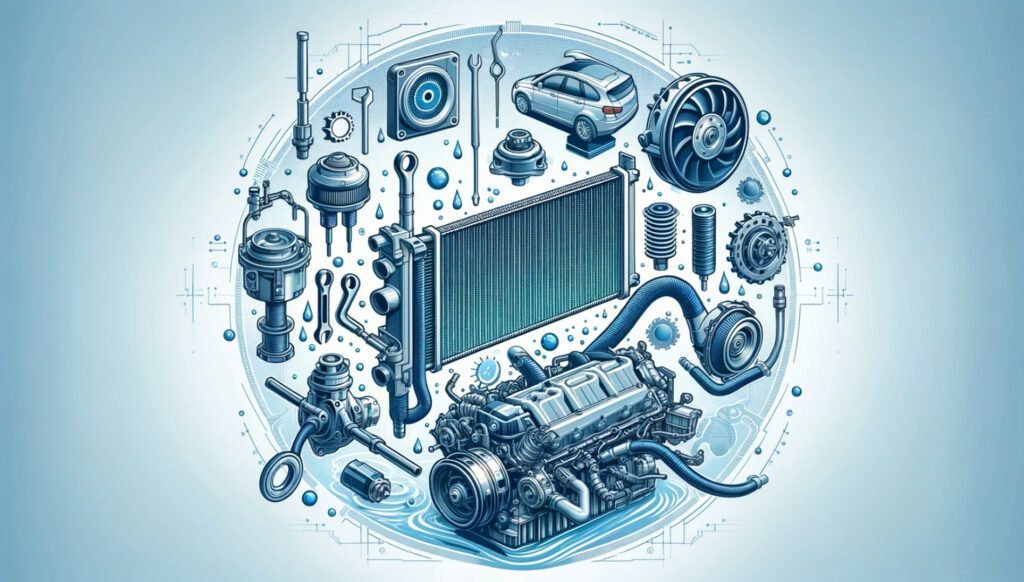Introduction: The cooling system is crucial for ensuring that your vehicle operates smoothly. Its job is to prevent the engine from overheating and to keep it running at a safe temperature. Let’s break down each of the main components and how they contribute to keeping your engine cool.
System Components:
- Radiator:
- Function: The radiator is the primary component where hot coolant from the engine is cooled down as it passes through the radiator’s tubes and fins. Air flows through the radiator to help dissipate heat.
- Signs of Trouble: Coolant leaks, corrosion, blocked fins, or a noticeable decrease in cooling efficiency can indicate radiator problems.
- Water Pump:
- Function: The water pump moves coolant through the engine and the radiator. It ensures a consistent flow so that hot coolant leaves the engine to the radiator while cool coolant returns to the engine.
- Signs of Trouble: Strange noises, coolant leaks around the pump, or a sudden increase in engine temperature may be symptoms of a faulty water pump.
- Thermostat:
- Function: The thermostat regulates coolant flow between the engine and the radiator. When the engine is cold, the thermostat remains closed, allowing it to warm up quickly. Once the optimal temperature is reached, it opens to allow coolant circulation and maintain a stable temperature.
- Signs of Trouble: A stuck thermostat can cause the engine to overheat (if it remains closed) or never reach the optimal operating temperature (if it remains open).
- Fan:
- Function: The fan helps move air through the radiator, especially when the vehicle is stopped or moving at low speeds. It can be mechanically driven (connected to the engine) or electric.
- Signs of Trouble: Overheating at idle or low speeds often indicates a problem with the fan.
Maintenance Tips:
- Check Coolant Levels:
- Coolant is essential for maintaining engine temperature. Make sure the level is between the «min» and «max» marks in the reservoir, adding the appropriate coolant type if needed.
- Inspect the Thermostat:
- If you notice the engine temperature gauge fluctuating sharply or the engine takes too long to warm up, the thermostat may be faulty. Timely replacement can prevent overheating issues.
- Examine the Radiator:
- Check for leaks or rust buildup. The fins should be clean and free of obstructions.
- Change the Coolant:
- Coolant deteriorates over time and loses effectiveness. Flush and refill as recommended by the manufacturer to prevent corrosion and keep the system in top condition.
- Inspect the Water Pump:
- Leaks or squeaking sounds indicate wear. Replacing a faulty water pump in time can save your engine.
These tips will help you detect early issues and keep your cooling system in peak condition, preventing costly engine damage and ensuring optimal performance.

